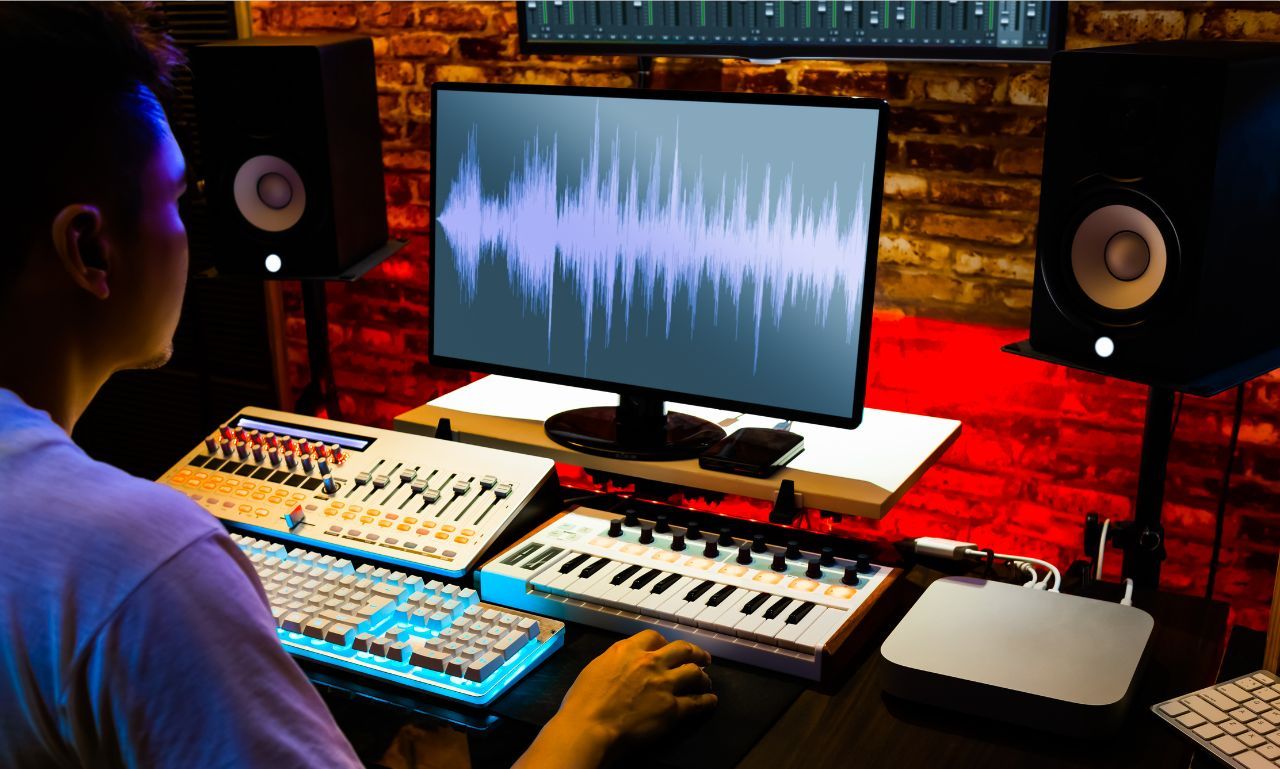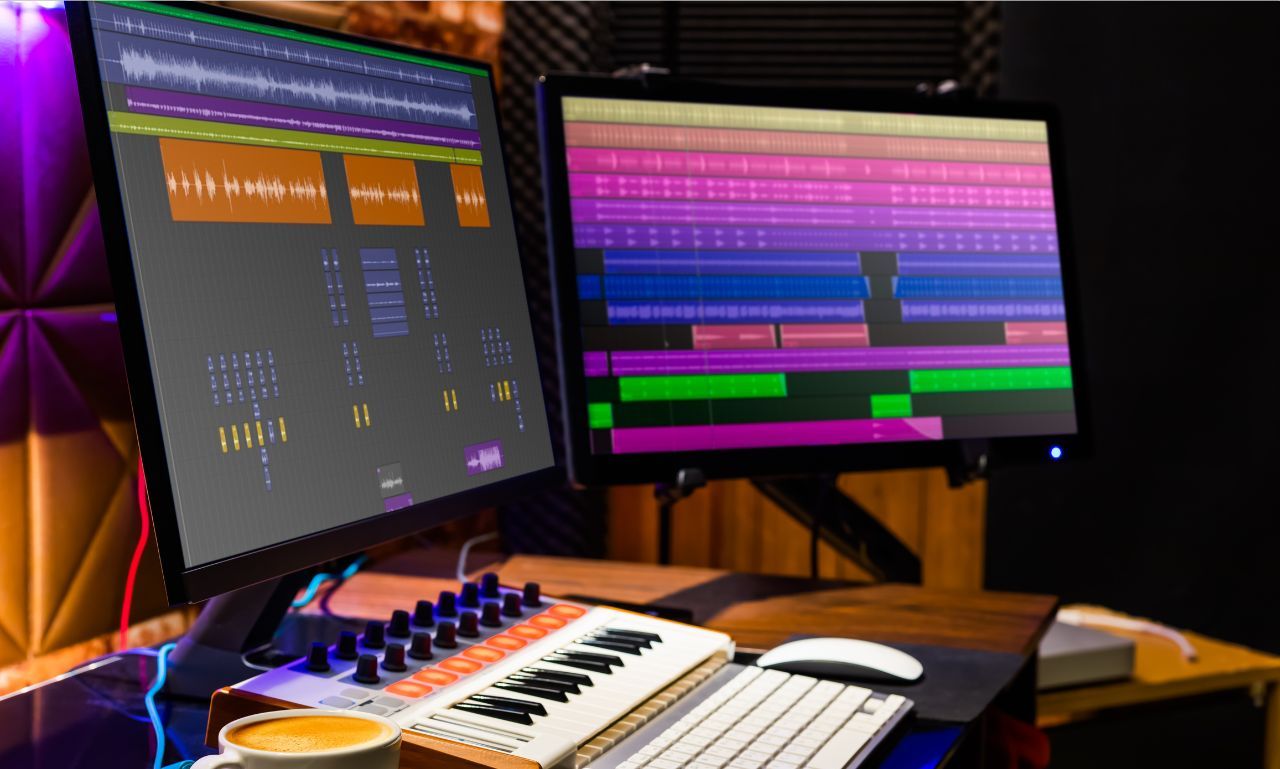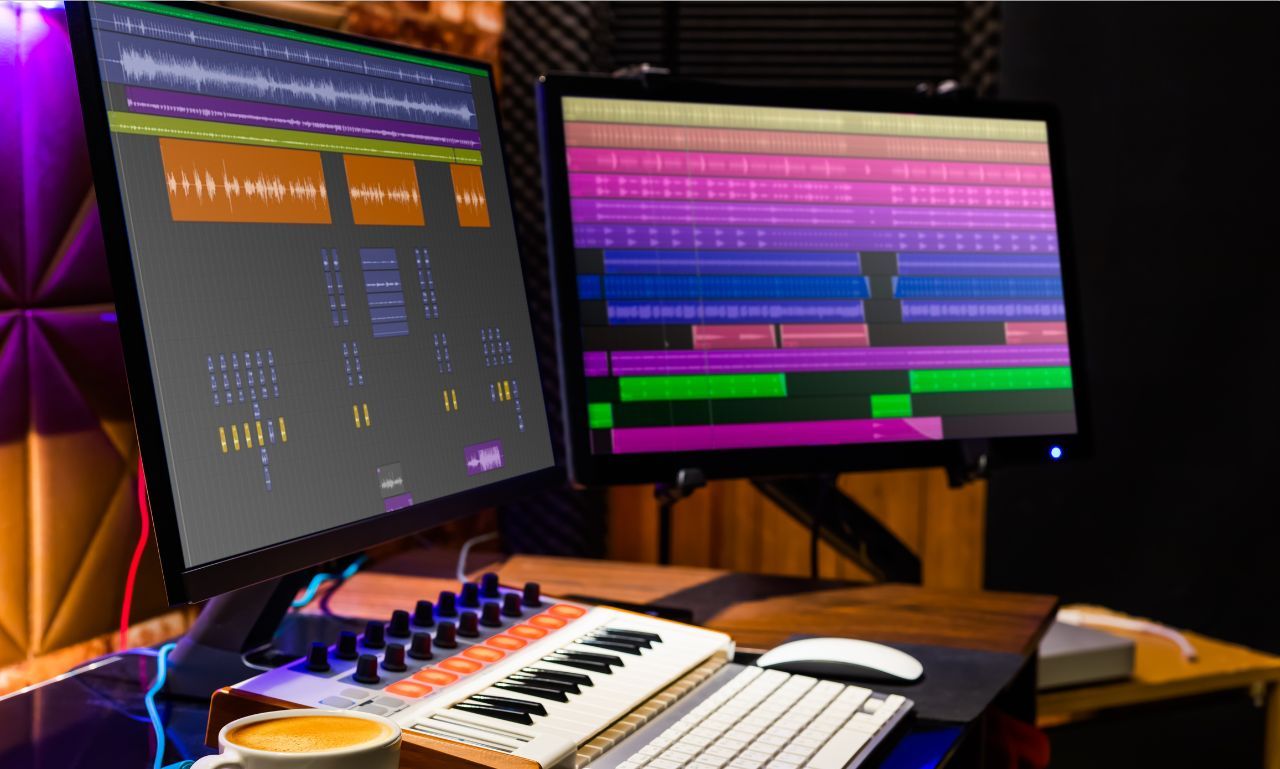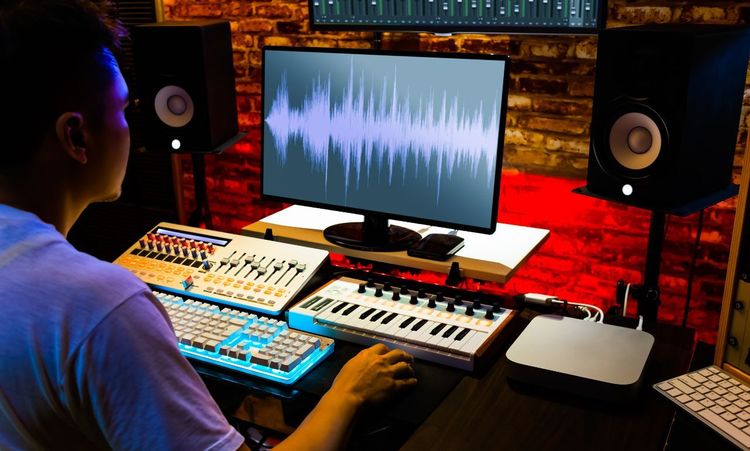Are you looking to take your music from amateur to pro? Choosing the right music production software is your first step toward creating studio-quality tracks. Whether you're an aspiring bedroom producer or a seasoned artist, the right tools can transform your creative ideas into polished, professional masterpieces.
What are the Essential Specifications for Music Production
The proper hardware and software settings are essential for achieving smooth performance and high-quality results when setting up a music production environment. Here are the key specifications to keep in mind:
Hardware Requirements

- Processor (CPU): A multi-core processor is essential for handling complex projects with multiple tracks, plugins, and real-time effects.
- Recommended: Intel Core i7 or AMD Ryzen 7 (or higher).
- RAM: Sufficient RAM is critical for managing large sample libraries and ensuring smooth workflow.
- Recommended: 16 GB (32 GB or more for heavy sessions).
- Storage: Fast storage speeds reduce load times for samples and software.
- Recommended: SSD (Solid State Drive) with at least 512 GB for primary storage; external SSD for backups.
- Audio Interface: A high-quality audio interface ensures low latency and crystal-clear audio input/output.
- Recommended: 24-bit/192 kHz interface with reliable ASIO drivers.
- Monitor: A more prominent display or multiple monitors improve workflow and give more space for arranging tracks.
- Recommended: 24" monitor or dual-monitor setup.
Recommended Software Settings
- Buffer Size: A lower buffer size (64–128 samples) reduces latency, making it ideal for recording; a higher buffer size (512–1024 samples) is better for mixing to avoid CPU overload.
- Sample Rate: For high-quality audio, use a sample rate of 44.1 kHz (standard for most music) or 48 kHz (for film scoring or video production).
- Bit Depth: 24-bit recording is standard for professional-level audio quality.
- CPU Performance Mode: Enable high-performance mode in your DAW to prioritize CPU resources for music production tasks.
By optimizing your hardware and configuring these software settings, you can enhance performance and achieve professional music production results.
What is the Common Music Production Software?
Ableton Live
Ableton Live is way more than a DAW; it's a power station for studio production and live performances. The intuitive interface allows for great ease in crafting electronic music. Be it an electronic music producer or a person going through various genres of music productions, Ableton Live offers seamless workflow.
Session View-a playground for spontaneity-is great for jamming and capturing your ideas on the fly. And with a vast library of virtual instruments and sound effects at your fingertips, the sonic possibilities get pretty huge. Plus, your creative potential is virtually limitless with support for third-party plugins.
Pro Tools

Pro Tools is thought of as an industry standard as far as pro audio production is concerned. Put to use among studios globally, it does impressive recording, editing, and mixing. Advanced, high-of-the-line features cater to high audio production, excellent for post-production, film scoring, and multiple sound manipulations.
Pro Tools handles audio tracks with impeccable sound quality. The powerful tools of the software will allow you to edit and mix precisely, so that your music sounds polished and professional. If you want studio-quality recordings, then Pro Tools is one of the best options.
Logic Pro X
Exclusively for Apple users, Logic Pro X is a comprehensive solution for music production. Its user-friendly interface is perfect for both beginners and seasoned producers. With an extensive library of stock plugins and virtual instruments, you have everything you need to create lush, professional-level tracks.
Logic Pro X shines with its advanced MIDI editing capabilities and intuitive user interface. The software also offers many sound libraries and loops to kickstart your creativity. For Mac enthusiasts, Logic Pro X is a powerful music production software that doesn't disappoint.
FL Studio
Formerly known as Fruity Loops, FL Studio has been a favorite among beginners and professionals alike. Its simple interface makes it accessible for beginners, yet it boasts a range of features that satisfy advanced users. The step sequencer and the drum machines prove to be pretty helpful in developing beats and rhythms.
The virtual instruments and FL Studio stock plugins lay a very strong foundation on which to create music-be it producing electronic or experimenting with various genres, the intuitive workflow in FL Studio brings your ideas right into life.
Cubase
Cubase has long been a go-to DAW for MIDI sequencing and composition. Its extensive capabilities make it suitable for complex arrangements and orchestrations. With a wide range of tools for audio editing and MIDI manipulation, Cubase caters to musicians who demand precision.
The software's audio quality and sound libraries are top-notch. Plus, its support for third-party plugins means you can expand your sonic arsenal as needed. Cubase is a solid choice if you're looking for a DAW that excels in audio and MIDI.
Studio One
Studio One from PreSonus presents a user experience that is intuitive, smoothing the process of creating music. Its drag-and-drop functionality and straightforward layout make jumping in and creating easy. Yet even with so much ease, Studio One boasts powerful recording, mixing, and mastering tools.
It has support for advanced audio effects and virtual instruments. Its seamless integration with PreSonus hardware increases the ease of recording audio in Studio One. That makes it quite versatile for both beginners in creating music and advanced music producers.
Reason
Reason stands out with its unique rack-based interface, mimicking physical hardware in a virtual environment. This creative setup encourages experimentation with routing and sound design. Reason comes with built-in instruments and effects visually represented as rack units, making it an excellent choice for hands-on producers.
The software's extensive library includes drum machines, synthesizers, and sample-based instruments. With its focus on creativity and sound exploration, Reason is a powerful tool for producing unique and innovative music.
GarageBand
GarageBand is Apple's entry-level music production software, perfect for complete beginners. Its simple interface makes music creation accessible to everyone. Despite its simplicity, GarageBand offers a variety of virtual instruments, loops, and basic audio recording capabilities.
It's an excellent starting point for those new to music production. Once you outgrow its features, transitioning to Logic Pro X is seamless, as the interface and workflows are similar.
Reaper
Reaper is a fully featured DAW at a budget-friendly price. It offers a high level of customization, allowing you to tailor the software to your workflow. Reaper easily handles audio and MIDI, and its performance is highly efficient, even on less powerful computers.
With support for third-party plugins and an active user community providing tutorials and guides, Reaper is a flexible solution for music producers looking for robust tools without breaking the bank.
How to Choose the Right Software
Choosing the right music production software is crucial for achieving professional results and depends on various factors such as your needs, experience level, and music genre. Here are key considerations to guide your decision:
1. Experience Level
- Beginners: If you're new to music production, opt for software with a simple, user-friendly interface. Look for built-in tutorials and accessible workflows that won't overwhelm you.
- Recommended: GarageBand (for Mac users), FL Studio, Studio One.
- Intermediate: If you’ve gained some experience, you may need more advanced tools, such as enhanced MIDI editing, mixing capabilities, and support for third-party plugins.
- Recommended: Logic Pro X, Cubase, Reason.
- Professionals: For those working on complex projects like film scoring, post-production, or live performances, advanced DAWs with precise editing tools and robust audio handling are necessary.
- Recommended: Pro Tools, Ableton Live, Bitwig Studio.
2. Music Genre

- Electronic Music: If you’re producing electronic music, prioritize DAWs that offer powerful sound design tools, loop-based production, and real-time performance features.
- Recommended: Ableton Live, FL Studio, Bitwig Studio.
- Orchestral and Complex Arrangements: MIDI control and advanced audio handling features are crucial for composers working on intricate arrangements.
- Recommended: Cubase, Logic Pro X, Studio One.
- General Music Production: If your production style involves working across multiple genres, choose a versatile DAW that supports various virtual instruments, loops, and plugins.
- Recommended: Logic Pro X, Reason, Reaper.
3. Key Features to Consider
- MIDI Capabilities: If you’re heavily involved in composition and arrangement, strong MIDI sequencing and editing features are essential.
- Recommended: Cubase, Logic Pro X, Studio One.
- User Interface: A clean and intuitive interface helps streamline your workflow, mainly when producing complex tracks.
- Recommended: FL Studio, Studio One, GarageBand.
- Sound Libraries and Plugins: Look for DAWs with extensive sound libraries or the ability to integrate third-party plugins for more flexibility.
- Recommended: Reason, Ableton Live, Pro Tools.
4. System Requirements
- Some DAWs require powerful computers to run efficiently. Check the minimum system requirements before choosing software, especially if you have older hardware.
- Light on Resources: Reaper, FL Studio.
- Resource-Intensive: Pro Tools, Logic Pro X.
By evaluating your skill level, genre, and the features that matter most to you, you'll find the right DAW to elevate your music production to the next level.
Ready to make some noise? Pick your software and start creating your masterpiece today!




